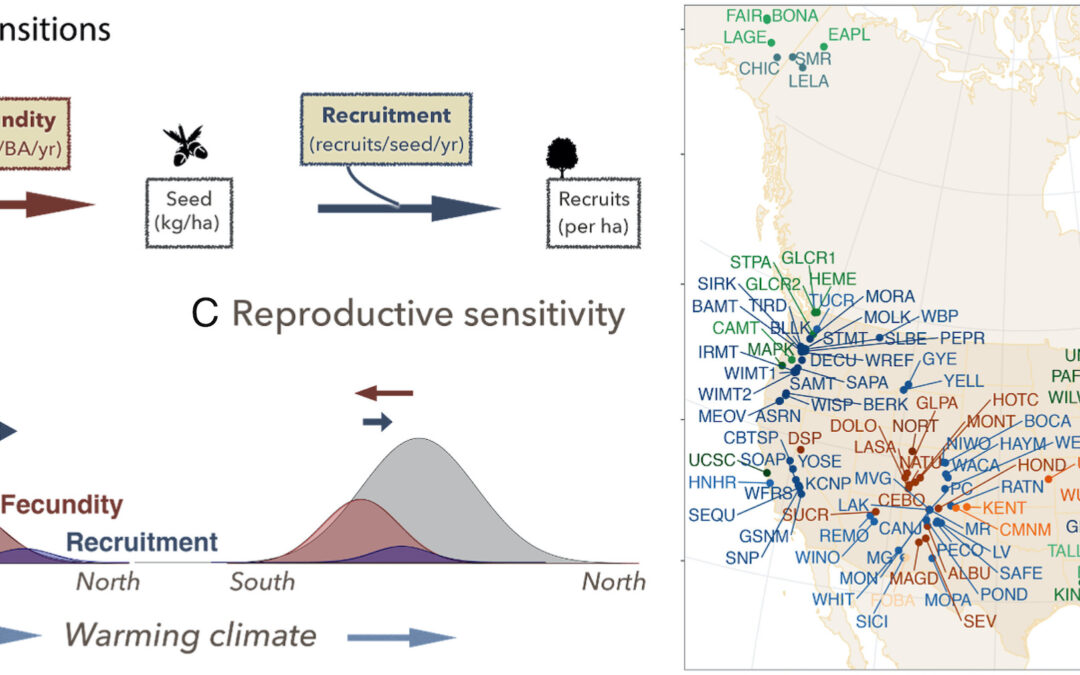Jonathan and colleagues in the Mast Inference and Prediction (MASTIF) Network publish a paper in PNAS titled “North American tree migration paced by climate in the West, lagging in the East”. Thanks to Shubhi Sharma and Jim Clark for leading this project!
Figure: Transitions, hypothesized effects on spread, and sites. (A) Population spread from trees (BA) to new recruits is controlled by fecundity (seed mass per BA) followed by recruitment (recruits per seed mass). (B) The Climate-tracking hypothesis (CTH) that warming has stimulated fecundity ahead of the center of adult distributions, which reflect climate changes of recent decades. Arrows indicate how centroids from trees to fecundity to recruitment could be displaced poleward with warming climate. (C) The Reproductive-sensitivity hypothesis (RSH) that cold-sensitive fecundity is optimal where minimum temperatures are warmer than for adult trees and, thus, may slow northward migration. The two hypotheses are not mutually exclusive. B and C refer to the probability densities of the different life stages. (D) MASTIF sites are colored by eco-regions: mixed forest (greens), montane (blues), grass/shrub/desert (browns), and taiga (blue-green).

